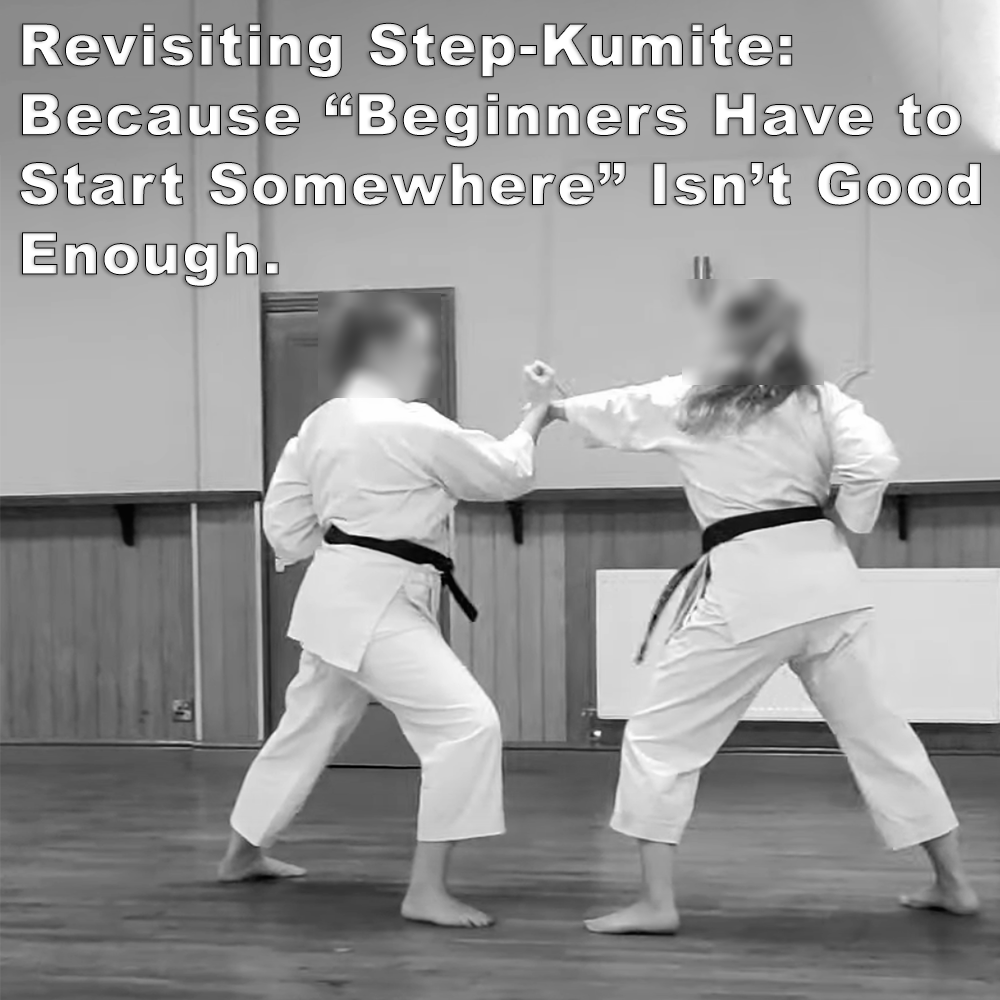
(Approx 2 minute 40 second read)
With regard to my recent article on step-kumite, someone argued that beginners need a starting point, and that step-kumite is often seen as an entry-level method.
.
He made the comparison to teaching a child how to catch a baseball – starting with a tennis ball at a short distance and gradually progressing to a baseball and longer throws. While that progression makes sense in skill-building, the analogy breaks down when we consider the purpose of the skill being taught.
.
In baseball, no matter the step, you’re still fundamentally learning to catch and throw – skills that directly apply to the real task.
.
In contrast, step-kumite is more like teaching someone to ride a bicycle when they ultimately need to drive a car. Yes, both have wheels – but the skills involved in driving are vastly different from those in riding.
.
Step-kumite doesn’t teach functional skills that translate into real-life situations. No one attacks or defends in that way – not in sparring, competition, or real life. It only helps you get better at doing step-kumite. It doesn’t develop the adaptability, technique, timing, or distance necessary for anything outside of that choreographed pattern.
.
As such, it remains a limited, scripted exercise that doesn’t reflect the unpredictability or demands of actual self-defense (or anything else).
.
He went on to say that beginners and children have to start somewhere. Yes – of course they do. But do they need to start with something that doesn’t work in any real context except its own performance? By the time they’re “ready” to progress, the pattern is already ingrained – and now they have to unlearn it.
.
Just as riding a bicycle won’t prepare you to drive a car, step-kumite doesn’t prepare students for the complexities of real combat, sparring or tournaments. Every method has its place – but if it doesn’t progress into something functional and realistic, then it’s not a foundation, it’s a dead end.
.
If your goal is fun, or simply to play, then there’s no issue. But let’s not pretend that this method leads naturally into real-life application as he suggested. It doesn’t. That claim is false.
.
To be honest, I wonder whether people who defend it simply don’t know what else to teach. It’s so ingrained in their style, method, or association that changing it would seem “untraditional”.
.
But in real combat – and in sparring and competition too – attacks come with unpredictable timing and happen at much closer distances. You must react instantly. Step-kumite reinforces the habit of waiting for the attack and responding with a rehearsed move. That’s not how real attacks work. That’s not even how sparring works.
.
This lack of realism teaches bad habits and creates false expectations about how to handle any kind of threat.
.
The commentator’s parting remark was that it teaches someone with no experience to feel what it’s like to have someone attack you. But the problem is – it doesn’t. It teaches them what it’s like to have someone step forward in a cooperative, pre-arranged manner and stop at the right distance (refer to the image). That’s not pressure. That’s not threat. And it’s certainly not what an actual attack feels like.
.
All it really does is give the illusion of preparedness – while conditioning the student to expect a type of attack that simply doesn’t happen outside of that drill.
.
Karate was founded in reality. If we want to prepare students for that reality (or competitions and tournaments),we need to train them to respond under pressure with practical, functional methods – ones that reflect the unpredictability, intensity, and close-range nature of real encounters. Not in a fixed, scripted environment that offers the illusion of experience, where “progress” is just repeating a routine that never leaves the comfort of cooperation.
.
And no – practicing an unrealistic drill over and over isn’t the same as gradually building real skill. That’s not progression. That’s just repetition dressed up as development.
.
.
Written by Adam Carter
